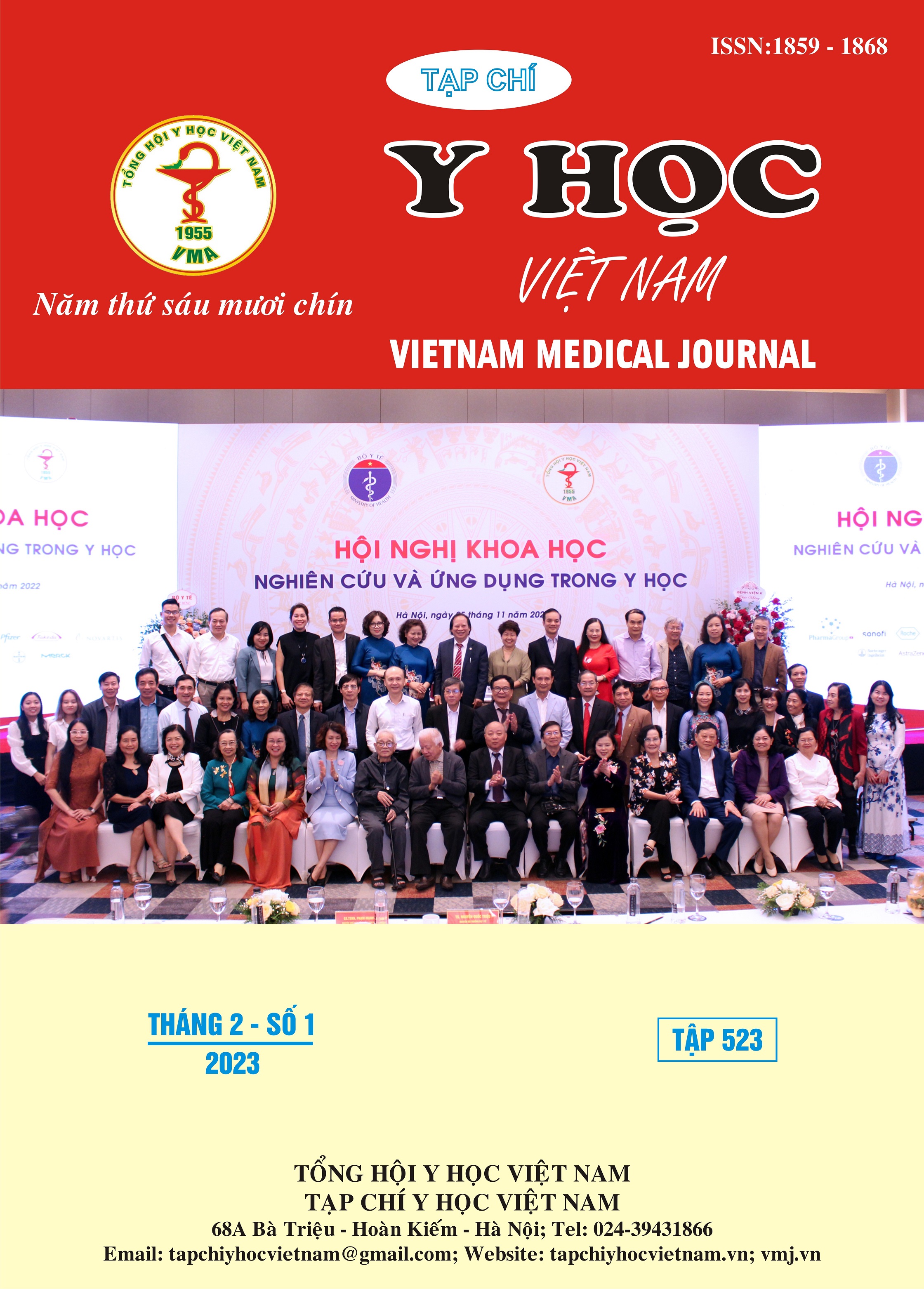CHARACTERIZATION OF REFRACTIVE ERRORS IN CHILDREN AT VIETNAM NATIONAL INSTITUTE OF OPHTHALMOLOGY FROM 2021 TO 2022
Main Article Content
Abstract
Objective: Evaluate the pattern of refractive errors in children and assess variables associated with severity of refractive errors from 2021 to 2022. Methods: descriptive cross-sectional study was performed on 162 children (324 eyes total) aged 6 to 15 years old, diagnosed with refractive errors at the Vietnam National Institute of Ophthalmology (VNIO) from 9/2021 to 7/2022. Results: 50% of participants presented to VNIO due to reduced visual acuity. Myopia accounted for 66,9% of the subjects, followed by hyperopia at 26,3% and mixed astigmatism at 2,6%. 14,2% of study participants suffer from amblyopia as a result of refractive errors, while 18% were determined to have anisometropia. Anterior chamber depth and axial length of myopic eyes are statistically significantly higher than that of hyperopic cases. Conclusion: Myopia is demonstrated as the most prevalent refractive error, followed by hyperopia and mixed astigmatism, respectively. A statistically significant difference in anterior chamber depth and axial length between myopia and hyperopia was observed.
Article Details
Keywords
refractive errors, children
References
2. Opubiri I, Adio A, Megbelayin E. Refractive error pattern of children in South-South Nigeria: A tertiary hospital study. Sky Journal of Medicine and Medical Sciences. 2013;1:10-14.
3. Pi LH, Chen L, Liu Q, et al. Prevalence of eye diseases and causes of visual impairment in school-aged children in Western China. J Epidemiol. 2012;22(1):37-44. doi: 10.2188/jea.je20110063
4. Mittal S, Maitreya A, Dhasmana R. Clinical profile of refractive errors in children in a tertiary care hospital of Northern India. International Journal of Community Medicine and Public Health. Published online January 1, 2016:1189-1194. doi:10.18203/2394-6040.ijcmph20161382
5. Alemu DS, Gudeta AD, Ferede AT, Alemu HW. Prevalence and degrees of myopia and hyperopia at Gondar University Hospital Tertiary Eye Care and Training Center, Northwest Ethiopia. OPTO. 2016;8:85-91. doi:10.2147/OPTO.S116535
6. Đỗ Thị Quỳnh (2019). Đánh giá thị lực lập thể ở trẻ em có lệch khúc xạ, Luận văn thạc sỹ y học,Trường Đại học Y Hà Nội, Hà Nội.
7. Kadhim YJ, Farhood QK. Central corneal thickness of Iraqi population in relation to age, gender, refractive errors, and corneal curvature: a hospital-based cross-sectional study. Clin Ophthalmol. 2016;10:2369-2376. doi: 10.2147/OPTH.S116743
8. Hosny M, Alio JL, Claramonte P, Attia WH, Perez-Santonja JJ. Relationship between anterior chamber depth, refractive state, corneal diameter, and axial length. J Refract Surg. 2000;16(3):336-340.


